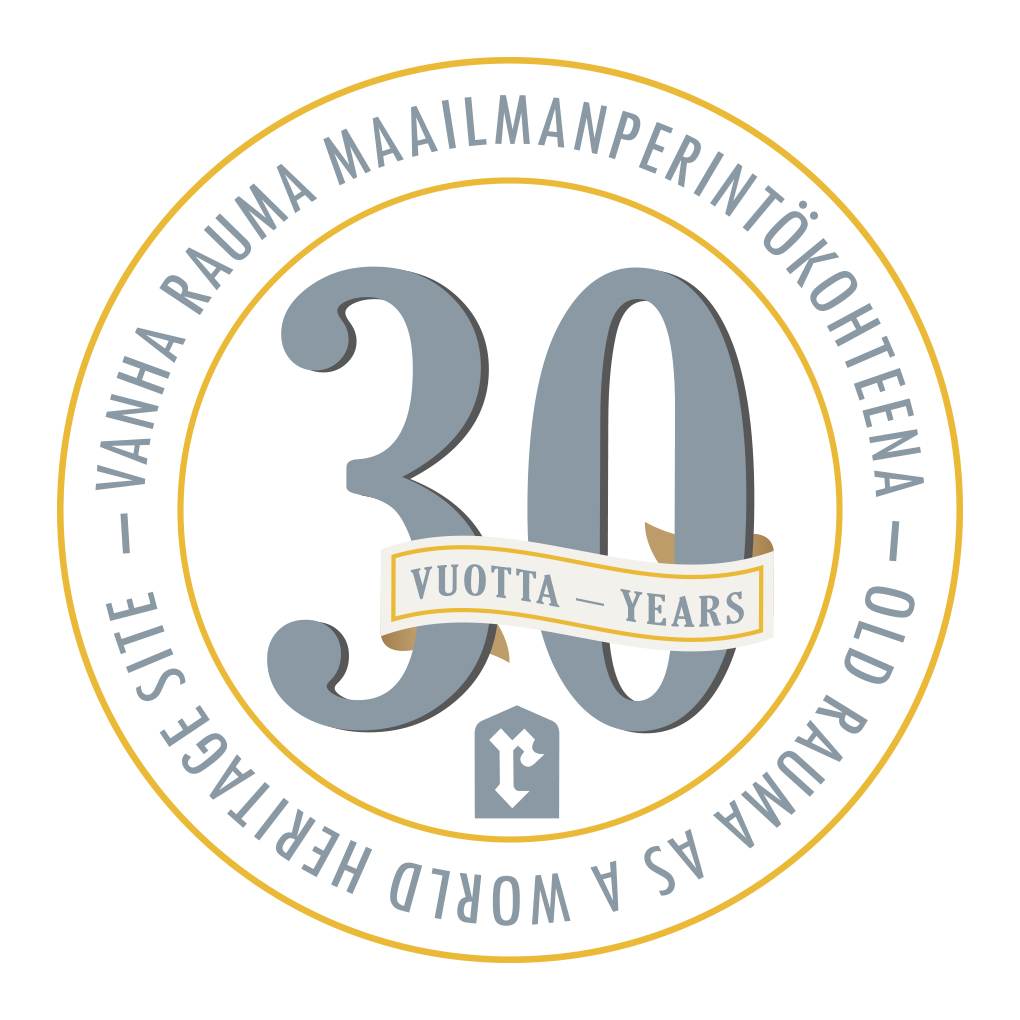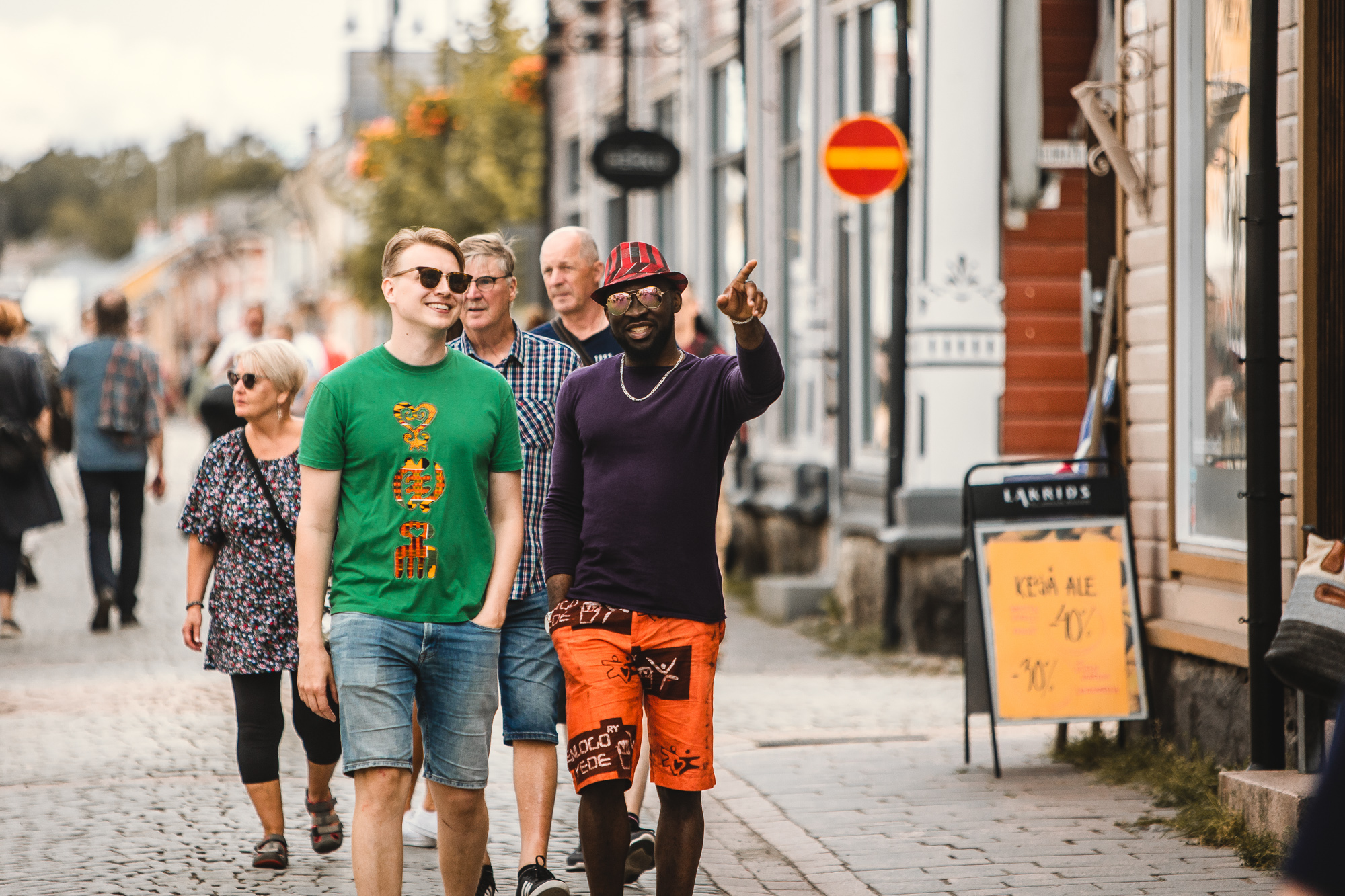MP30 – Old Rauma through the eyes of an international tourist
5.8.2021


Old Rauma, a UNESCO World Heritage Site, will celebrate its 30th anniversary in 2021. Old Rauma was inscribed on the World Heritage List in 1991 as a unique example of a living and well-preserved old Nordic tree city.
In the tenth part of the 30 Years of Old Rauma as a World Heritage Site series, the international traveller’s experience of Old Rauma is described.
Old Rauma through the eyes of an international traveller
Old Rauma, a UNESCO World Heritage Site, is visited by tourists from all over the world. The two World Heritage sites in Rauma are particularly popular with so-called World Heritage enthusiasts, who count their visits and keep a list of as many World Heritage sites as possible.
Old Rauma is visited by tourists all year round. According to statistics from the Tourist Information Office, the most popular months to visit are June, July and August. The highest number of foreign visitors is in late summer, which is traditionally the holiday season for Central Europeans.
Unesco status and Old Rauma’s reputation as a charming wooden town attract visitors, but how does an international tourist experience Old Rauma? How does a first-time visitor to Old Rauma see the area? Of course, tourists’ experiences are highly individual and each person enjoys their visit in their own way, but for years now certain standard questions and issues have been raised time and time again in the work of the tourist adviser.
Old Rauma is a living city centre
Many international tourists are puzzled to ask whether this whole area is not a museum. It is not clear to almost everyone that the wooden houses of Old Rauma are home to ordinary Finnish people and that the area is a living and vibrant city centre.
Foreign tourists also wonder about the possibility of modern living in the houses of Old Rauma. They wonder about modern living in an old house combined with the fact that the houses are still heated with wood.
It is easy to continue the debate on these issues and to tell tourists that the Old Town was and still is a functionally and socially diverse residential and commercial area – as old towns always have been. This is one of the criteria for Old Rauma’s nomination to the UNESCO World Heritage List.
On the other hand, foreigners wonder why it is allowed to drive in the Old Rauma area. In Europe’s old historic districts, driving is often completely forbidden or at least strictly restricted. Most foreign tourists coming to Rauma come from Central Europe, where they are used to car-free streets in old towns.
Tourists are interested in local daily life
Japanese tourists particularly admire wooden houses and wooden architecture. They are attracted by the carefully maintained façades and beautifully manicured courtyards. Interest and even respect for the Finnish social system is aroused by the fact that the Finnish government provides financial assistance for the renovation of old buildings in the World Heritage area. A visit to the renovation centre in Tammela and its courtyard buildings will convince visitors that the World Heritage value of Rauma is well looked after, now and in the future.
In addition to the buildings and architecture, the international tourist is interested in the stories and the ordinary, everyday life of the locals. Old Rauma has hundreds, if not thousands, of details that tell the most interesting stories about life in the city, past and present. Among the most popular, and at the same time most evocative, are the name plates of the houses, porcelain dogs and gossip mirrors in the windows, which are displayed in many places.
Foreign tourists often want to experience local life through food and drink. Tourist information offices regularly ask visitors about traditional local dishes or typical Finnish home cooking. Finnish fish, berries and mushrooms have a good reputation and people want to try them. In Rauma, of course, it is recommended to try “lapskoussie”, the traditional food of sailors. Often, for example, visitors from northern Germany will recognise the ‘Kindkoussi’, which has been part of the everyday diet of sailors in their port towns and in the Baltic Sea region as a whole.
Irene Villanen, Tourism Manager
